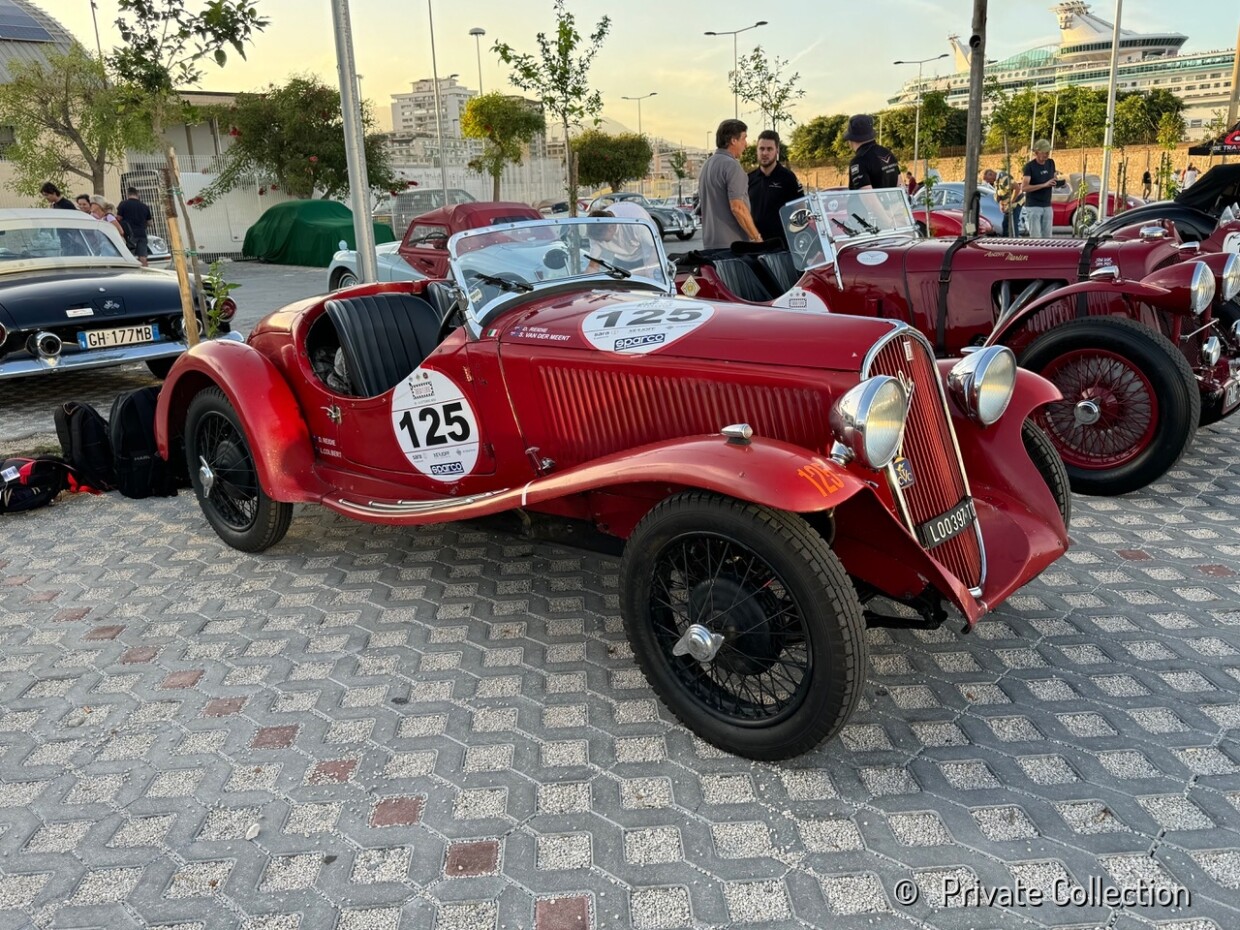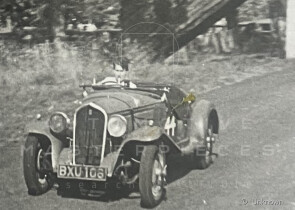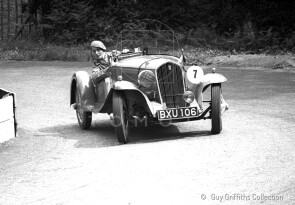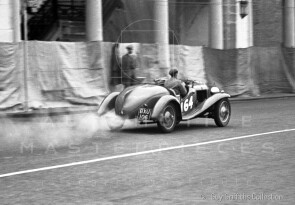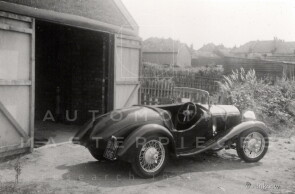
1935 Fiat 508 S Balilla Sport
ON/OFF
Why am I an Automotive Masterpiece?
Launched in 1932, the Fiat 508 Balilla quickly established itself as the car that put Italy on wheels. Developed under the technical direction of Tranquillo Zerbi, with contributions from Antonio Fessia and Dante Giacosa, the Balilla was designed to embody the regime’s ambition of creating an affordable national car. Its release aligned with the Fascist government’s push for modernization and industrial self-sufficiency, aiming to broaden access to mobility and reinforce national pride through Italian engineering. The car’s success stemmed from its low purchase price, modest operating costs, and ease of maintenance—key factors in a country still emerging from postwar economic hardship. Powered by a 995-cc inline four-cylinder side-valve engine producing around 20 hp, the Balilla offered adequate performance for its class. It featured a three-speed gearbox, rear-wheel drive, and a simple yet robust ladder-frame chassis with solid axles and leaf springs, prioritizing reliability and ease of repair. Compact, mechanically straightforward, and affordable, the Balilla became a cornerstone of Italian mass motorization. It was not only popular among private buyers, but also widely used in commercial and institutional roles—becoming a true icon of Fiat’s pre-war production and Italy’s automotive awakening.
The 508 S Balilla Sport, a competition version, was inspired by an original design by Carrozzeria Ghia. The first examples were built on the Fiat 508 Spyder chassis, suitably modified as “tipo corsa” (i.e. racing type), and still bore chassis numbers without the letter "S". In 1933, Fiat officially introduced the sporting version 508 S Balilla Sport, characterized by a lighter, elegant, and attractive body, which soon became a dream car for the younger generation. Fiat acquired the design rights from Ghia and produced two versions: the standard version, known as “Coppa d’Oro”, featured fully enclosed fenders, while the “Mille Miglia” version used lighter cycle fenders and a more lightweight chassis. The engine was also uprated from the standard 36 hp to 43 hp. The Coppa d’Oro version won the Coppa d’Oro del Littorio, from which it took its nickname, while the Mille Miglia version won the 1933 Mille Miglia in the up to 1100 cc Utility Class. Clothed in stylish open two-seater bodywork with a distinctive finned tail, the early "Spider Sport" models retained the crash gearbox of the standard cars but featured a special carburetor. Combined with a raised compression ratio of 7:1, this allowed for a maximum output of 30 hp at 4,000 rpm. In 1934, the second series 508 CS was introduced, improving on this successful formula. It adopted a four-speed synchromesh gearbox and an overhead-valve engine producing 46 hp. The final drive ratio was also modified, allowing for a top speed of 110 km/h. At the time, Siata was already producing accessories and performance parts for the Balilla, making it arguably one of the earliest car tuning companies in automotive history.
The Fiat 508 S Balilla Sport with chassis 508s068686 and body by Carrozzerie Speciali Fiat, was first registered in the UK in 1935 with license plate BXU 106. It is believed that around 20 Balilla "Coppa d’Oro" models were imported into England. There is no information about its very early years, except that the specimen had as distinctive features the windscreen, Rudge knock off wheels, and right-hand drive, but, thanks to the information in the letters preserved by the Fiat registry, UK, we have access to useful documents on the car and we are able to confirm Mr. Hull as the owner in the year 1939. Thanks to the same source, we know that Mr. Marcus Hunter was the owner in 1947 and that, that same year, he transferred it to Muriel Monica Whincop, who had remarried Alfred Clarence "Twink" Whincop in 1939. The two Whincops were passionate amateur drivers; Twink was a well-known figure in the Bugatti world before and after the war and, unfortunately, took his own life in 1952. Monica is described as “a strangely attractive woman, whose appearance was quite different from most women on the Bugatti scene at the time.” She was a very influential woman in aircraft production and a Prescott paddock marshal. She competed shortly after World War II, in the UK, with several cars, hers and her husband's, but became known thanks to her small and fierce Balilla "Coppa d'Oro." Motorsport in May 1947 reads: “Monica Whincop now has a most intriguing little car, in the form of a 1935 sports Fiat Balilla with a 1938 1,100-c.c. Balilla engine. She contemplates things like twin S.U.s, raised compression, stronger clutch springs, etc., so as to go even quicker than at present.” It seems that the original 995 engine blew up, and that a 1100 was fitted (probably from 1947 to 1950). Monica Whincop, with the Balilla Sport, chassis 508s068686, participated in the first post-war racing car event in the UK on July 13, 1947: the Joint Invitation Race Meeting, where they qualified 1st in class. On August 30, 1947, they were again 1st in class at the V.S.C.C. Prescott Hillclimb, earning the "Fastest Ladies’ Time." As reported in Motor Sport Magazine of October 1947, Monica had a red outfit matching the car, which carried a terse political notice on its tail, referring to the coming motorless regime due to fuel shortages. Monica Whincop also raced with the Balilla in 1948, appearing at the Prescott Speed Hill Climb where, as reported by Motor Sport Magazine of July 1948, the car was penalized in terms of engine displacement and at the Brighton Speed Trials. And, on September 18, 1948, she participated in a historic event: the First Goodwood Motor Race Meeting. On the inaugural day of the Goodwood Circuit, Monica Whincop presented a bouquet to the Duchess of Richmond and Gordon, then the Duke opened the event. Unfortunately, she did not start the race due to gearbox problems. The Balilla Sport, chassis 508s068686, was sold in 1950 and was found 10 years later in Christchurch (UK) in the hands of Mrs. England. On July 11, it was described as follows by the person who examined it: “it is red on bald tires, arrow screen has at some time being fitted, framework restorable, body structure very weak and requires complete renewal…” Again, the correspondence found helps to reconstruct the history of the specimen, its owners, and the care they took of the car, which in 1966 was purchased by the well-known collector Giulio Vignale, who brought it to Italy and began its restoration. Among the Italian owners that followed was Pietro Vergnano, Journalist and author of several books on aviation and motoring including "La Sport e I suoi artigiani" together with Andrea Curami. The Balilla Sport, chassis 508s068686, participated in its first Mille Miglia re-enactment in 1988 and is featured in many automotive publications. In 2007 it obtained the FIVA Identification document for the first time. From 2010 to 2013 it belonged to Daniele Turrisi, then passed into a private collection. From 2014 to 2024 it has been a regular presence at the most important races, from the Mille Miglia to the Gran Premio Nuvolari, to the Targa Florio. An interesting note: with the new owner, the car has once again been listed by the UK Fiat Registry, after a hiatus of over 60 years.
